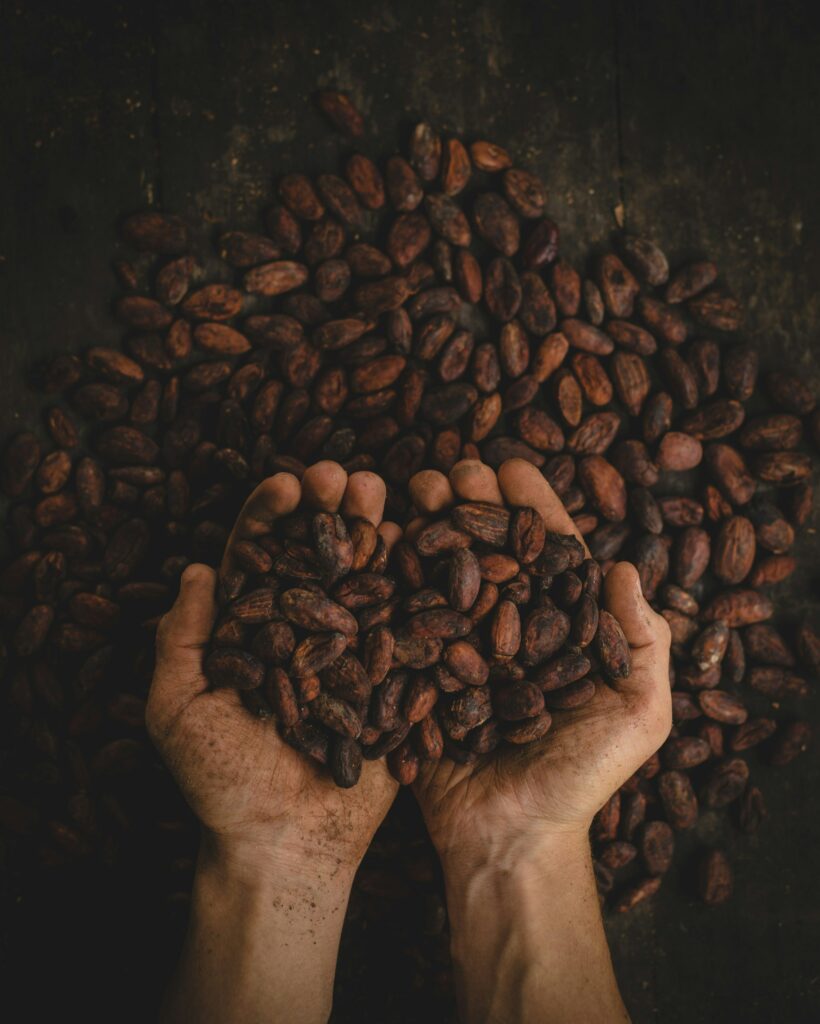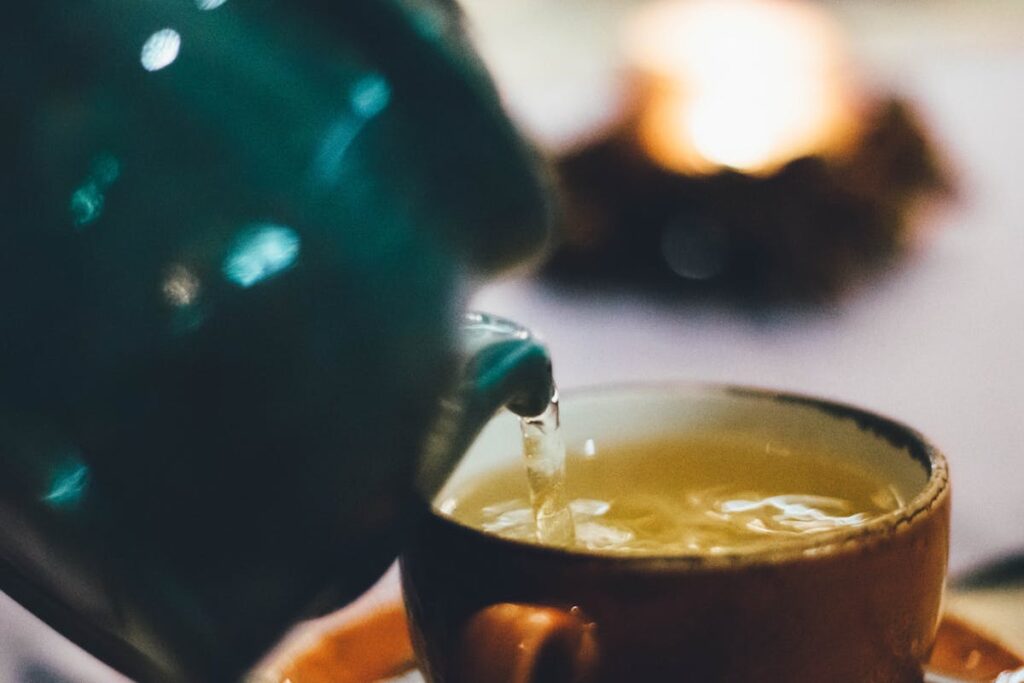Catechin is an organic compound belonging to the flavanol family, a subclass of flavonoids . This natural polyphenol is known for its powerful antioxidant properties, making it an essential ally in the fight against oxidative stress and chronic diseases. Initially isolated from the catechu tree ( Acacia catechu ), catechin is now recognized as a key component in many plants, including green tea leaves and cocoa. For manufacturers in the plant and cosmetics sectors, Yes We Lab offers specialized analysis services to ensure the quality and efficacy of their products.
1. Introduction to Catechins
Importance in key areas
Catechin plays a crucial role in several areas. In health, its antioxidant and anti-inflammatory properties contribute to the prevention of cardiovascular disease and metabolic disorders. In the food industry, it is used as a natural additive to enrich foods with beneficial compounds. In cosmetics, it offers moisturizing and protective properties for the skin, helping to reduce the signs of aging. Finally, in the environmental field, catechin is studied for its potential impacts on ecological systems and its role in sustainable development.
2. Classification and types of catechins
Chemical structure of catechin
Catechin is a flavanol, a subclass of flavonoids characterized by a complex chemical structure composed of a chroman core with several attached hydroxyl groups. Its chemical formula is C15H14O6, and it is distinguished by its ability to scavenge free radicals, contributing to its powerful antioxidant properties. The presence of two asymmetric carbons (positions 2 and 3 of the central heterocycle) gives catechin several stereoisomeric configurations.
Isomers and their configurations
Catechin exists in four main forms due to its stereoisomers:
- (+)-catechin: 2R, 3S configuration
- (−)-catechin: 2S, 3R configuration
- (+)-epicatechin: 2S, 3S configuration
- (−)-epicatechin: 2R, 3R configuration
In nature, the most common forms are (+)-catechin and (−)-epicatechin. These isomers are found primarily in foods such as green tea, cocoa beans, and some fruits. Thermal processing, such as roasting cocoa, can also alter the balance between these isomers.
Classification of catechins and derivatives
Besides the basic forms, catechins form derivatives such as gallates and procyanidins:
- Gallates : Galloylation of catechins, such as in epigallocatechin gallate (EGCG), enhances their antioxidant activity.
- Procyanidins : These catechin polymers, such as procyanidins B1 and B2, are often found in red wine and berries.

3. Natural sources of catechins
Plants rich in catechins
Catechins are mainly present in several plant species, including:
- Green tea ( Camellia sinensis ): This is one of the most concentrated sources, with a high content of epigallocatechin gallate (EGCG), a powerful antioxidant. Fresh leaves contain catechins in proportions that vary depending on the variety and cultivation methods.
- Cocoa ( Theobroma cacao ): Unroasted cocoa beans contain mainly (−)-epicatechin and procyanidins. These compounds are responsible for many of the beneficial properties associated with dark chocolate.
- Nuts and Berries : Apples, grapes, and blueberries are other examples of important sources of catechins and their derivatives.
Variability depending on environmental conditions
Catechin concentrations in plants can vary depending on several factors:
- Climate and soil : Increased light exposure and nutrient-rich soil promote greater catechin accumulation.
- Agricultural practices : Organic farming methods tend to maintain higher levels of polyphenols, including catechins.
Impact of transformation processes
Food processing methods also influence catechin content:
- Drying tea leaves : Unoxidized green teas retain their catechins better than black or oolong teas.
- Cocoa roasting : This process results in a modification of the catechin isomers and an overall reduction in their concentration.
4. Biological properties and health benefits
The antioxidant properties of catechin
Catechin is recognized for its role in neutralizing free radicals, which are responsible for oxidative stress. This stress is implicated in cellular aging and the development of chronic diseases, such as cardiovascular disease and certain cancers. Thanks to their chemical structure rich in hydroxyl groups, catechins act as effective free radical scavengers, thus reducing oxidative damage to lipids, proteins, and DNA.
Cardiovascular benefits
Catechins, particularly those in green tea such as epigallocatechin gallate (EGCG), play a crucial role in cardiovascular health. They contribute to:
- Reduce bad cholesterol (LDL) : Catechins limit the oxidation of LDL, a key factor in the formation of atheromatous plaques.
- Improve endothelial function : They promote relaxation of blood vessels, thus reducing blood pressure.
- Prevent the formation of blood clots : Their antithrombotic effect helps prevent cardiovascular accidents.
Anti-inflammatory and antimicrobial effects
Catechins also possess anti-inflammatory properties by inhibiting the production of pro-inflammatory cytokines. These effects are particularly beneficial in the management of chronic inflammatory diseases such as arthritis and intestinal disorders.
Their antimicrobial action has been demonstrated against several pathogens, including Helicobacter pylori , responsible for gastric ulcers, and certain viruses, such as influenza viruses.
Other health impacts
Catechins also have benefits in other areas:
- Reduced risk of diabetes : They improve insulin sensitivity and help regulate blood sugar levels.
- Support for the immune system : Their immunomodulatory action strengthens the body's natural defenses.
- Neuroprotective effect : Studies suggest that they may protect against neurodegenerative diseases, such as Alzheimer's, through their ability to reduce inflammation and oxidative stress in the brain.
Are you looking for an analysis?

5. Role of catechins in foods and beverages
Use of catechins in the food industry
Catechins are widely used in the food due to their antioxidant properties and health benefits. They are involved in:
- Food preservation : Due to their ability to inhibit lipid oxidation, catechins extend the shelf life of food products such as oils, snacks and beverages.
- Beverage fortification : Green tea and herbal teas rich in catechins are increasingly popular for their health benefits. Some companies are also adding catechin extracts to functional beverages.
- Manufacturing of food supplements : Catechins, in the form of standardized extracts, are incorporated into capsules or powders for their preventive role against various diseases.
Role of catechins in cosmetics
cosmetics sector , catechins play a crucial role as active ingredients for their antioxidant, anti-inflammatory and anti-aging properties. They are incorporated into:
- Moisturizing and anti-aging creams : Catechins help protect the skin from UV damage and reduce the appearance of wrinkles.
- Hair products : Their ability to strengthen hair fibers and protect the scalp makes them a key component of shampoos and hair serums.
- Anti-acne treatments : Their antimicrobial action helps prevent breakouts and reduce inflammation.
Pharmaceutical applications
Catechins are also used in the development of pharmaceutical products, particularly for their effects on cardiovascular health and their anticancer potential. They are used in:
- Drug formulations : Catechins, such as EGCG, are being studied for their effectiveness in preventing certain cancers and managing metabolic disorders.
- Treatments for infections : Their antimicrobial action is explored to fight bacterial and viral infections.
Innovation potential
The industrial applications of catechins continue to evolve thanks to technological advances and research. New formulations are improving their bioavailability and expanding their use in sectors such as food packaging, where they could be used as antioxidant coatings.
6. Laboratory techniques for analyzing catechins
Sample collection and preparation techniques
The accuracy of analytical results depends heavily on sample preparation:
- Waterproof and inert packaging : Samples must be protected from oxidation to preserve the integrity of the catechins.
- Liquid-liquid extraction : This method is often used to isolate catechins from food or biological matrices.
- Chemical derivatization : In some cases, catechins are modified to improve their detection during analysis.
- Preparation of complex matrices : Foods, beverages or plant extracts require purification and extraction steps to isolate catechins from other components.
Analytical techniques for the quantification of catechins
Catechins, as complex chemical compounds, require advanced laboratory techniques for their analysis. Several analytical methods are used to identify and quantify catechins, including:
High-performance liquid chromatography (HPLC)
HPLC is the most commonly used technique for catechin analysis due to its accuracy and sensitivity. It allows the separation, identification, and quantification of the different catechins present in a sample. UV-vis detectors are often used to measure their concentration .
- This technique allows precise identification of catechins thanks to their specific molecular mass, offering increased sensitivity to detect even low concentrations.
- Catechins are separated based on their chemical properties, such as their polarity, on a chromatographic column.
- HPLC allows the individual identification of different forms of catechins (catechin, epicatechin, EGCG, etc.) and the measurement of their concentrations in a complex matrix.
UV-Vis spectrophotometry
This method is used to estimate the total catechin content:
- Principle : Catechins absorb UV light at a specific wavelength, which allows their concentration to be determined.
- Limitations : Although rapid, this technique lacks precision in differentiating individual isomers.

7. Industrial applications of catechins
Applications in the food industry
Catechins, due to their antioxidant and antimicrobial properties, play an essential role in the food :
- Food preservation : Catechins prevent fat oxidation and extend the shelf life of high-fat products.
- Natural additives : In beverages like tea and wine, they improve stability and provide health benefits.
- Protection against pathogens : Their antimicrobial activity helps limit the growth of microorganisms in processed products.
Cosmetic applications
In the cosmetic , catechins are integrated for their beneficial effects on the skin:
- Antioxidant protection : Catechins neutralize free radicals, thus delaying skin aging.
- Reduced inflammation : They soothe redness and irritation, contributing to healthier skin.
- Sun care : Sunscreen products containing catechins provide additional protection against UV damage.
Applications in pharmacy and nutraceuticals
Catechins have attracted increasing interest in the pharmaceutical and nutraceutical :
- Dietary supplements : Rich in antioxidants, they are used to strengthen the immune system and improve cardiovascular health.
- Treatment of chronic diseases : Studies show their potential to alleviate the symptoms of inflammatory and neurodegenerative diseases.
- Health products : Catechins are incorporated into formulations intended for the management of oxidative stress, a key factor in various pathologies.
Applications in the materials industry
Less well known but promising, the use of catechins in materials is emerging:
- Polymer additives : The antioxidant properties of catechins extend the durability of biodegradable plastics.
- Protective coatings : These are used in paints and coatings to limit degradation due to oxidation.




